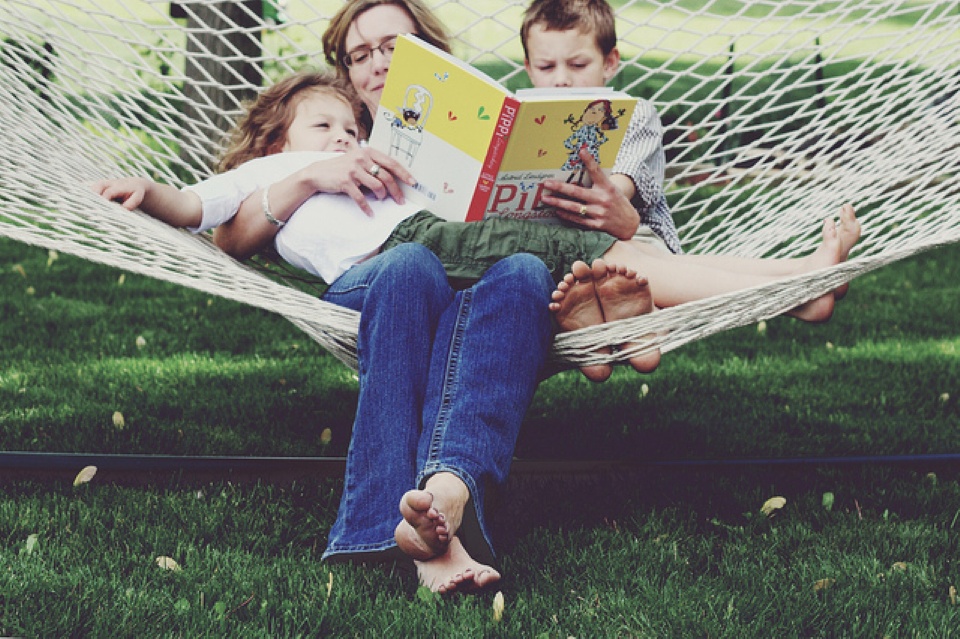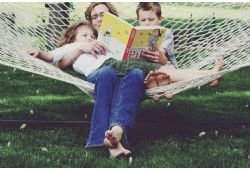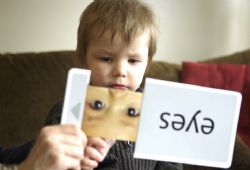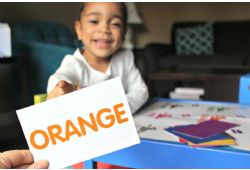Parenthood can be like a giant juggling
act—a show-stopping, multi-tasking fiasco that leaves you wondering where one
can purchase extra hours in the day. More and more families have two-income
households. Busy parents often equal less quality family time on a daily basis.
Even for busy stay-at-home parents, finding the time to get it all done is an
overwhelming task.
BASED ON THE UPCOMING BOOK, OUT IN
2016!
The preschool years are a very formative
time for children, a time when they begin to model their parents, begin to show
signs of preferences for certain activities, develop their language and speech,
and ultimately, have their minds and schedules wide open for learning. This is
the perfect time to introduce children to the joys of literacy. Early reading
readiness skills are paramount to school success once a child enters
Kindergarten, so it is never too early to start! Here are some creative ways to
carve out 15 minutes a day for your
child’s early literacy skills. Each activity can be done in 15 minutes or less
on a daily basis. These tips are excerpts from my upcoming book, which offers
detailed game plans and a ton of variety for daily 15-minute activities.
0-2
years old
Bath time is a goldmine for sneaking in
some learning. Get a set of foam alphabet letters for the tub (start with upper
case letters) and have fun sticking them to the walls or tub, showing your
child how the letters match up with the alphabet song. Early letter recognition sets the stage for
essential preschool skills. Your child will eventually recognize alphabet letters
by sight (in and out of order) and then master alphabetic order. 15 minutes a
day or less, and bath time is no longer just a routine part of the day. Don’t
worry—there will still be time for bubbles and cuddles while you play.
2-3
years old
Alphabet fridge magnets are classic, but provide
a good bang for your buck. Find a set that has upper and lower case letters, and show your child how to match them up.
This puts into practice alphabetic order, and allows your child to see
different representations of the same letter. An easy way to guide your child
is to slow down the melody of the alphabet song while you sing together,
helping him figure out which letter is next. 15 minutes a day is all it takes!
I used to sneak this in while preparing supper, or while making lunches in the
morning.
3-4
years old
This is a great time to introduce
letter-word association. A budget friendly pick is a set of flashcards that
focus on initial letter sounds. For example, the B card might have an image of
a ball, the D card a dog, etc. When playing with the cards, make the initial
letter sound for your child; “B is for ball, Buh, Buh, Buh, ball.” Not only
will your child begin to make letter associations with objects he/she is
familiar with, but he/she will also begin to understand that each letter makes a
sound. A fun way to shake it up is to have two sets of flashcards. Lay one set out on the floor or carpet, and
with the other set, have your child find the matching letter card.
4-5
years old
As your child increases his letter-word and letter-sound association, it is a
good time to begin working on both gross and fine motor skills. Your child can
begin to make attempts at copying or tracing upper case alphabet letters using
wide-ruled paper. There is no need for
perfection at this point, but positive reinforcement and encouragement go a
long way into making early literacy skills an exciting adventure for your preschooler. Remember, all it takes is 15 minutes a day!.
From
birth onwards…
Multiple studies have shown that reading
to your child on a daily basis (even from birth) results in a higher chance
that your child will be motivated to learn to read, and quite possibly become a
lifelong reader. Reading for pleasure in not taught, it is experienced. If you show a consistent interest in reading yourself,
the likelihood that your child will pick up a book on his own increases
dramatically. Always remember that our children don’t follow our advice, they
follow our example.

 In The Latest Issue:Latest Issue:
In The Latest Issue:Latest Issue:
- A Bittersweet Farewell
- The new Laval Aquatic Co...
- The End of an Era:
Articles
Calendar
Virtual- ANNUAL TEACHER APPRECIATION CONTEST
- APPUI LAVAL
- ARTS & CULTURE
- CAMPS
- CAR GUIDE
- CCIL
- CENTENNIAL ACADEMY
- CHARITY FUNDRAISING
- CITYTV
- COSMODÔME
- COMMUNITY CONNECTIONS
- COVER STORY
- DINA DIMITRATOS
- ÉCOLE SUPÉRIEURE DE BALLET DU QUÉBEC
- EDITORIALS
- ÉDUCALOI
- EDUCATION
- EMPLOYMENT & ENTREPRENEURSHIP
- FÊTE DE LA FAMILLE
- FÊTE DU QUARTIER SAINT-BRUNO
- FAMILIES
- FESTIVAL LAVAL LAUGHS
- FÊTE DE QUARTIER VAL-DES-BRISES
- FINANCES
- GLI CUMBARE
- GROUPE RENO-EXPERT
- HEALTH & WELL-BEING
- 30 MINUTE HIT
- ANXIETY
- CHILDREN`S HEALTH & WELLNESS
- CLOSE AID
- DENTAL WELLNESS
- EXTREME EVOLUTION SPORTS CENTRE
- FONDATION CITÉ DE LA SANTÉ
- GENERAL
- HEARING HEALTH
- MESSAGES FROM THE HEALTH AGENCY OF CANADA
- MENTAL HEALTH
- SEXUALITY
- SOCIAL INTEGRATION
- SPECIAL NEEDS
- TEENS
- THE NUTRITION CORNER
- THE NUTRITION CORNER - RECIPES
- VACATION DESTINATION
- WOMEN'S FITNESS
- WOMEN'S HEALTH
- HILTON MONTREAL/LAVAL
- HOME & GARDEN
- INTERNATIONAL WOMEN'S DAY
- JAGUAR LAVAL
- LAVAL À VÉLO
- LAVAL FAMILIES TV SHOW
- LAVAL FAMILIES MAGAZINE CARES
- LAVAL URBAN IN NATURE
- LE PARCOURS DES HÉROS
- LES PETITS GOURMETS DANS MA COUR
- LEON'S FURNITURE
- LEONARDO DA VINCI CENTRE
- LFM PREMIERES
- LIFE BALANCE
- M.P. PROFILE
- MISS EDGAR'S AND MISS CRAMP'S SCHOOL
- MISSING CHILDREN'S NETWORK
- NETFOLIE
- NORTH STAR ACADEMY LAVAL
- OUTFRONT MEDIA
- PASSION SOCCER
- PARC DE LA RIVIÈRE-DES-MILLE-ÎLES
- PÂTISSERIE ST-MARTIN
- PIZZERIA LÌOLÀ
- PLACE BELL
- PORTRAITS OF YOUR MNA'S
- ROCKET DE LAVAL
- SACRED HEART SCHOOL
- SCOTIA BANK
- SHERATON LAVAL HOTEL
- SOCIÉTÉ ALZHEIMER LAVAL
- STATION 55
- STL
- SUBARU DE LAVAL
- TECHNOLOGY
- TEDXLAVAL
- TODAY`S LAURENTIANS AND LANAUDIÈRE
- TODAY`S LAVAL
- WARNER MUSIC
- THIS ISSUE
- MOST RECENT
Magazine
15 Minutes a Day for Your Preschooler’s Literacy
A parent’s guide to preparing 2-5 year olds for reading readiness
Articles ~e 105,7 Rythme FM 4 chemins Annual Teacher Appreciation Contest Appui Laval Arts & Culture Ballet Eddy Toussaint Camps THIS ISSUE MORE...
CONTESTS Enter our contests
CONTESTS Enter our contests
CALENDAR
Events & Activities
COMMUNITY Posts Events
PUBLICATIONS Our Magazine Family Resource Directory
LFM BUSINESS NETWORK Learn more
COUPONS Click to save!
COMMUNITY Posts Events
PUBLICATIONS Our Magazine Family Resource Directory
LFM BUSINESS NETWORK Learn more
COUPONS Click to save!
SUBSCRIPTIONS
Subscribe to the magazine
Un-Subscribe
E-NEWSLETTER Subscribe to our E-newsletter Un-Subscribe
WRITE FOR US Guidelines & Submissions
POLLS Vote today!
E-NEWSLETTER Subscribe to our E-newsletter Un-Subscribe
WRITE FOR US Guidelines & Submissions
POLLS Vote today!
ADVERTISERS
How to & Media guide
Pay your LFM invoice
SUGGESTIONS Reader's Survey Suggest a Listing
LFM About Us Our Mission Giving Back Contact Us
SUGGESTIONS Reader's Survey Suggest a Listing
LFM About Us Our Mission Giving Back Contact Us
 PICK-UP LOCATIONS
Get a copy of LFM!
PICK-UP LOCATIONS
Get a copy of LFM!
TERMS & CONDITIONS Privacy | Terms
ISSN (ONLINE) 2291-1677
ISSN (PRINT) 2291-1677
Website by ZENxDESIGN







Tweet
Share